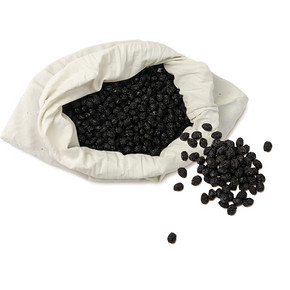Description of flavor and flavor of Costa Rican coffee beans
Follow the caf é (Wechat official account vdailycom) and found that Beautiful Cafe opened a small shop of its own.
Costa Rican coffee beans
Full particles, ideal acidity, unique and strong fragrance
Tarrazu in Costa Rica is one of the major coffee producing areas in the world. The coffee produced is light and pure in flavor and pleasant in aroma. Costa Rica, with its fertile volcanic soil and good drainage, is the first country in Central America to grow coffee and bananas for commercial value. Coffee and bananas are the country's main exports. Coffee was introduced into Costa Rica from Cuba in 1729 and today its coffee industry is one of the most well-organized industries in the world with a yield of 1700 kg per hectare. Costa Rica, with a population of only 3.5 million, has 400 million coffee trees, and coffee exports account for 25 per cent of the country's total exports. Costa Rica has also benefited from the establishment of the Central American Institute for Agricultural Research (Turrialba of the Central American Agricultural Research Institute, referred to as IAAC) in Tarasu, which is an important international research centre.

High-quality Costa Rican coffee is called "SHB". This kind of coffee can grow above 1500 meters above sea level. Altitude has always been a problem for coffee growers. The higher the altitude, the better the coffee beans, not only because the higher altitude can increase the acidity of the coffee beans and thus increase the flavor, but also because the night temperature at the higher altitude is lower, which can make the trees grow slowly, thus making the coffee beans have a stronger flavor. In addition, due to the high altitude drop caused by sufficient rainfall, is also very beneficial to the growth of coffee trees. However, while there are many advantages to growing coffee at higher elevations, the resulting additional transport costs must be taken into account, which is likely to make coffee production unprofitable. The coffee industry in Costa Rica has adopted new technologies to increase efficiency, including the use of "electric eyes" to select beans and identify coffee beans of irregular size.
Located in the south of the country's capital, San Jose, Tarasu is one of the most valued coffee growers in the country. La Minita Tarrazu coffee is a famous local product, but its production is limited, about 72600 kilograms a year. It is grown on a piece of land called La Minita, which is owned by the last three generations of the McAlpine family in the UK. In fact, this land can produce more than 450 tons of coffee a year. But Tarasu Latin America coffee is grown without artificial fertilizers or insecticides, and its harvesting and selection are done by hand, in order to avoid some damage to coffee beans caused by air spray selection.
Other coffees worth mentioning are Juan Vinas,PR, H.Tournon, Windmill,SHB, Monte bello and Ssnta Rosa. Fine coffee is generally grown in Geredia and the central canyon. Another striking type of coffee is Sarchi (one of the five towns that represent Costa Rica's Coffee Road), which grows on the slopes of the Poas Volcano volcano, 53km from San Jose. Saatchi, founded in 1949, has a land area of 30770 hectares and grows sugar cane and coffee. The area is also famous for its handicrafts, attracting tourists from all over the world.
The country's coffee industry, originally controlled by the Costa Rican Coffee Industry Company (Instituto del Cafe de Costa Rica, ICAFE), has been taken over by the official Coffee Committee (Oficina del Cafe). Among the exported coffee, those products that are considered to be of substandard quality are colored with blue vegetable dyes and then transferred back to China for sale. Coffee consumed domestically (dyed blue or undyed) accounts for about 10% of total production, and local per capita coffee consumption is twice that of Italy or the United States.
Costa Rica is a Spanish word meaning "rich coast".
At the top of the Costa Rican national emblem is a blue belt with the words "Central America", expressing Costa Ricans' memory of the original federation; below is a white ribbon with green branches and the name of the Republic. The corn kernels on both sides of the national emblem are round and golden, indicating that the agriculture of this plateau country is dominated by corn cultivation. The three reddish-brown volcanic peaks represent the Barbaa, Ilasu and Boas mountains between the Pacific Ocean and the Caribbean, with 3/4 of Costa Rica's coffee-producing population living on the flowering green plateau. The seven white five-pointed stars in the blue sky represent the seven existing provinces of Costa Rica. There is an ancient white sailboat in the close range of the Caribbean Sea and the Pacific Ocean behind the mountains, and the dynamics of the voyage bring out Costa Rica's prosperous maritime trade. A rising sun is rising on the sea, and the dawn of the new century shines on the bright future of this country.
The country is divided into seven provinces, 81 counties and 421 districts. The names of the provinces are as follows: San Jose, Alajuela, Catago, Eredia, Guanacaster, Pentalenas and Li
Have the best environmental conditions to produce the best coffee
Costa Rica has more than 2 centuries of tradition and experience in growing, harvesting, roasting and selling high-quality coffee beans. Since the 19th century, the export of coffee has not only integrated Costa Rica with the world, but also deeply affected the development of infrastructure, health, education, economy and other fields in Costa Rica.
Only one variety of Arabica coffee beans is planted in the country. More than 70% of them grow in alpine areas. In addition, it has more than half a century of coffee research experience, making it the vanguard of modern coffee production.
75% of Costa Rica's coffee beans are sold under unique product brands to the boutique coffee market that is willing to pay a high price for their coffee.
The production of coffee, its aroma, flavor, acidity and taste, can meet the most stringent evaluation of Lao Amoy!
The best agricultural technology of Costa Rican coffee is grown in eight major producing areas. In order to obtain high-quality coffee during the harvest season, coffee beans are harvested at the most mature time.
The Central Valley mountain soil produces excellent, highly acidic, mellow, fragrant and chocolate-flavored coffee.
The volcanic fertile soil of the western valley (West Valley) produces a well-scented and acidic coffee with a blended style with peach and almond flavors.
Tarazhu Mountain (Tarrazu) produces good aroma and slightly acidic coffee similar to orange or lemon acid. Nearly 95% of coffee beans are very hard beans (SHB).
The coffee in Sanhe District can be called SHB, which can produce a cup of coffee with a perfect balance in terms of fine, high acidity, good flavor and aroma.
Orosi is a soft and balanced coffee with good acidity, flavor and aroma. Eurasian coffee is grown in fertile areas of the volcanic zone.
CordBruce and Peris Sheridong are located in the Oolongka producing area, and the coffee produced is compatible with coffee from high altitude areas, so it is a good shooter. A cup of CordBruce coffee tastes with moderate acidity, aroma and flavor.
Peris Sheridong Coffee is characterized by its thick beans, excellent aroma, flavor and acidity.
Affected by the rainy climate, Duli Alba produces coffee with low acidity, good flavor and good aroma, which is grown on volcanic ash soil and impact soil.
Located in the province of Vanacaster in the northern part of Costa Rica, nearly 85% of the plants have forests, shade-controlled coffee is grown on fertile soil, and a cup of coffee produced by Vanacaster has a good balance in flavor, aroma and acidity.
The eight coffee producing areas in Costa Rica have a common understanding of quality, that is, mature coffee fruits are required to produce high-quality coffee, and every process of coffee production complies with the requirements of maintaining nature and the natural environment. Modern coffee crystal washing, processing no longer uses a large amount of water, and now circulating filters are used to purify the waste water from washing coffee beans into clean water. In addition, sundries from coffee production are recycled and converted into organic fertilizers, livestock feed and coffee bean dryer fuel. In coffee manufacturing, we all use the international evaluation and management standard ISO to certify employees' health, environmental management and coffee quality.
In addition to being an excellent coffee producer, Costa Rica is also a consumer of high-quality coffee. In the international coffee producer, Costa Rica is also one of many countries with high coffee consumption.
Important Notice :
前街咖啡 FrontStreet Coffee has moved to new addredd:
FrontStreet Coffee Address: 315,Donghua East Road,GuangZhou
Tel:020 38364473
- Prev

What is the quality of Costa Rican coffee beans?
Following Ka Pin (Wechat official account vdailycom) found that Beautiful Cafe opened a small shop of its own S.H.B. It is a very hard bean with an altitude of more than 1500 meters above sea level, which means high quality Costa Rican coffee. This extra-hard coffee bean suitable for medium and heavy roasting has a strong sour taste and charming aroma. Costa Rican SHG coffee is usually full of grains and clear in flavor.
- Next

Guatemala coffee bean species planting status grading grade taste flavor description of the story characteristics of the producing area
Following Cafe (official Wechat account vdailycom) found that the Beautiful Cafe opened its own shop in the Republic of Guatemala (Spanish: Repblica de Guatemala), translated from Taiwan as Guatemala, a country in Central America located in the south of the North American continent. It borders the Pacific Ocean to the west, the Caribbean Sea to the east, Mexico to the north, Belize to the northeast, and east to the east.
Related
- Detailed explanation of Jadeite planting Land in Panamanian Jadeite Manor introduction to the grading system of Jadeite competitive bidding, Red bid, Green bid and Rose Summer
- Story of Coffee planting in Brenka region of Costa Rica Stonehenge Manor anaerobic heavy honey treatment of flavor mouth
- What's on the barrel of Blue Mountain Coffee beans?
- Can American coffee also pull flowers? How to use hot American style to pull out a good-looking pattern?
- Can you make a cold extract with coffee beans? What is the right proportion for cold-extracted coffee formula?
- Indonesian PWN Gold Mandrine Coffee Origin Features Flavor How to Chong? Mandolin coffee is American.
- A brief introduction to the flavor characteristics of Brazilian yellow bourbon coffee beans
- What is the effect of different water quality on the flavor of cold-extracted coffee? What kind of water is best for brewing coffee?
- Why do you think of Rose Summer whenever you mention Panamanian coffee?
- Introduction to the characteristics of authentic blue mountain coffee bean producing areas? What is the CIB Coffee Authority in Jamaica?

